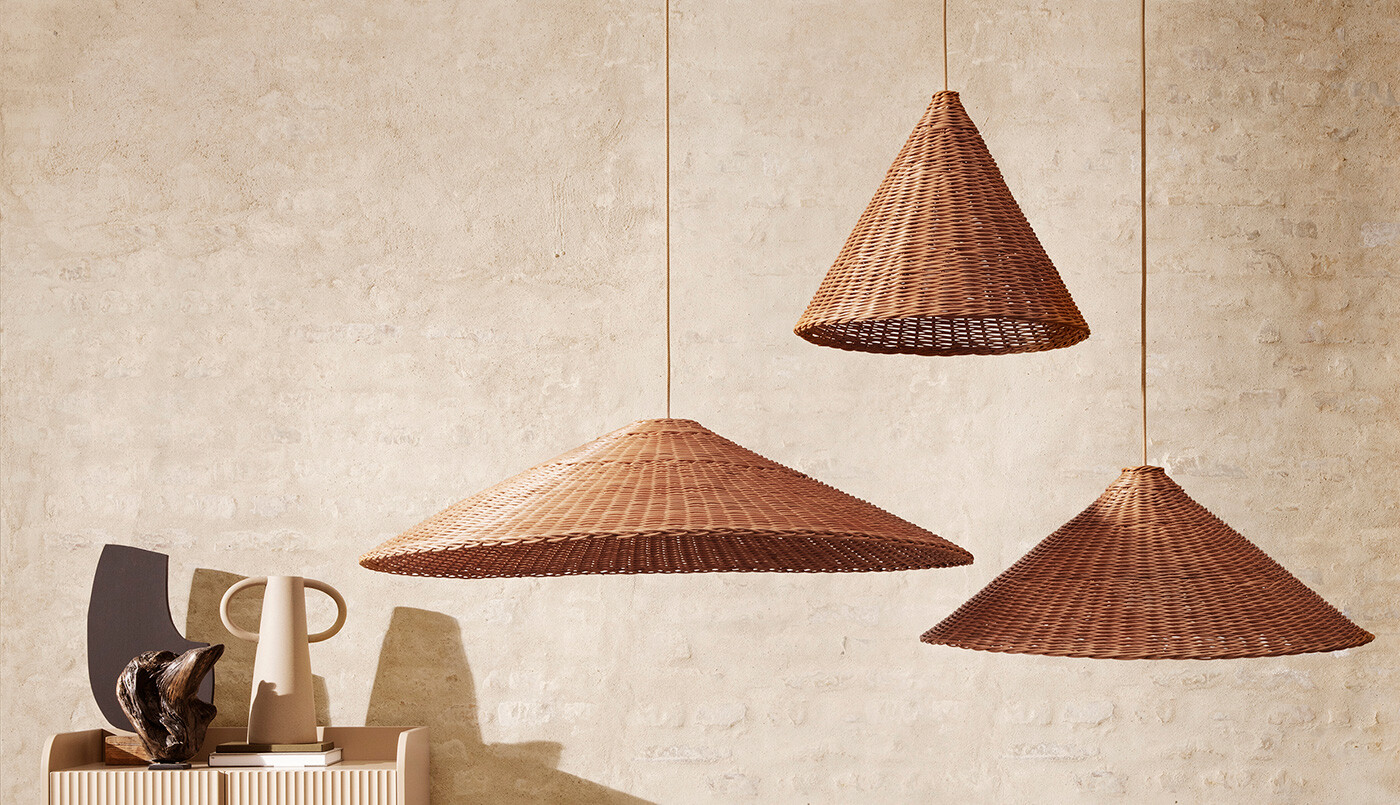Rediscovering Rattan Furniture & Home Accessories
Earthy and informal yet also elegant and stylish, rattan is a beautiful way to introduce nature into the home.
Rattan has weaved its magic as a popular interior trend in recent years and its popularity is only on the rise. Believed to be the oldest material known to man and favourite of many mid-century designers, rattan furniture has a rich and fascinating history. This natural, textured material has the rare ability to look both relaxed and ultra-stylish at the same time.
With a growing environmental consciousness, many of us are keen to incorporate more natural elements into our homes. For those hoping to invest in sustainable furniture, understanding materials is key to making well-informed choices. Read below as we discover more about rattan, its history, its sustainability credentials, and how this humble material can be introduced into your home.
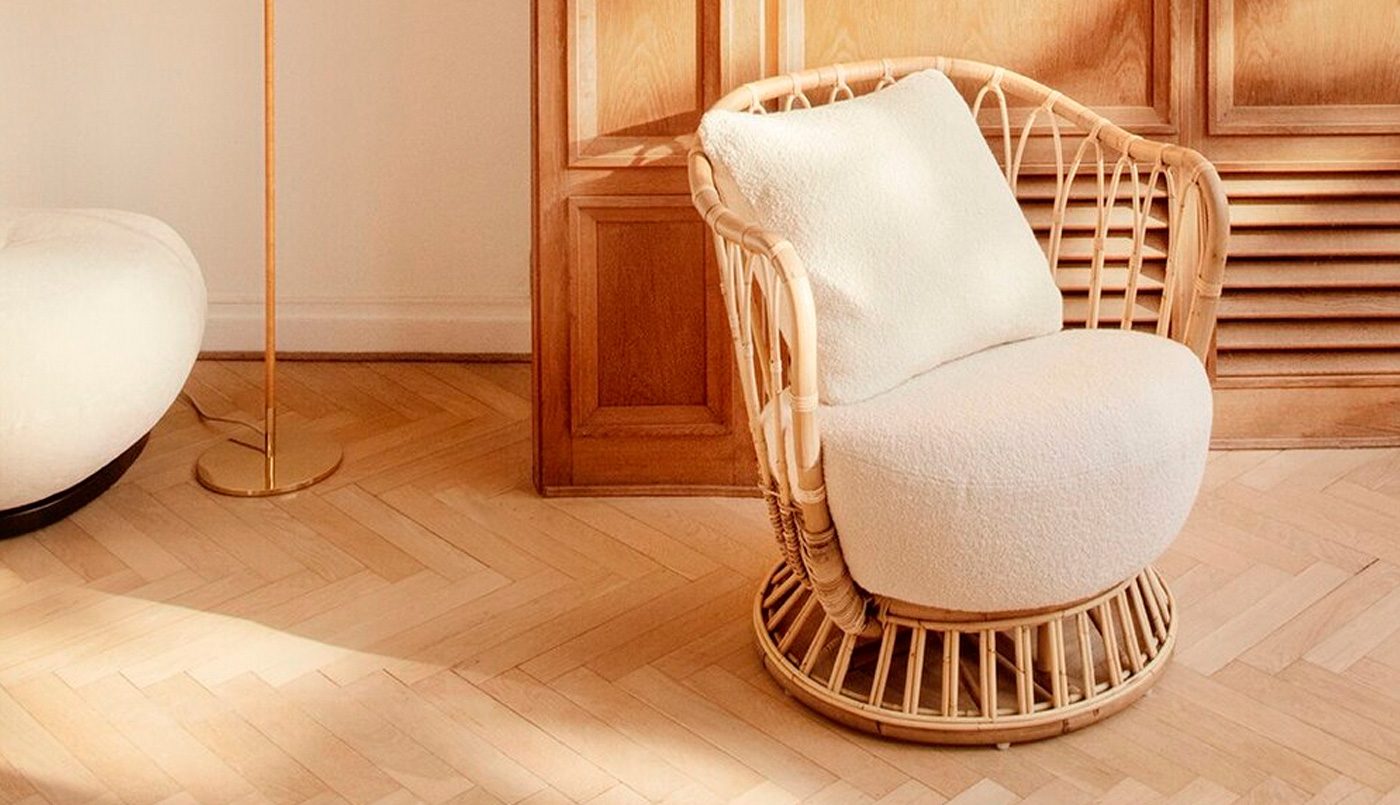
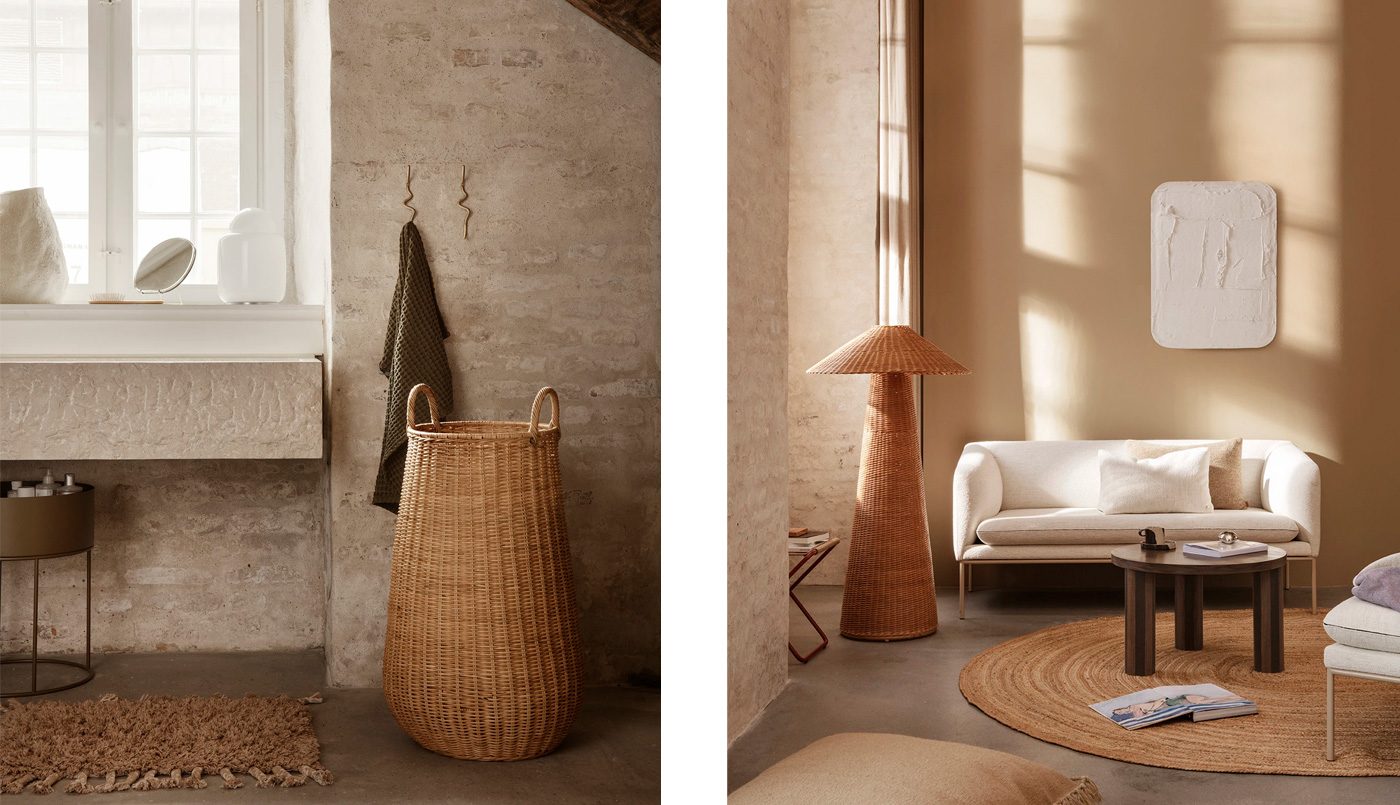
What is Rattan?
Derived from the Malay word ‘rotan’, rattan is the name for more than 600 species of climbing palms that grow in hilly tropical regions. Most of the world’s rattan is sourced from the forests of the Indonesian Archipelago. Though it also grows in regions of South and Southeast Asia and parts of Africa and Australia.
Although not a true wood, rattan's combination of flexibility and durability has made it a popular material with furniture makers for millennia. Each part of the stem can be used in different ways. For example, the bark can be stripped and used for weaving or caning whilst the inner reed-like section is ideal for creating wicker furniture. As a natural, organic material, rattan is highly characterful; the markings on its surface tell the story of the plant's growth. Over time the reeds develop a beautiful, rich patina.
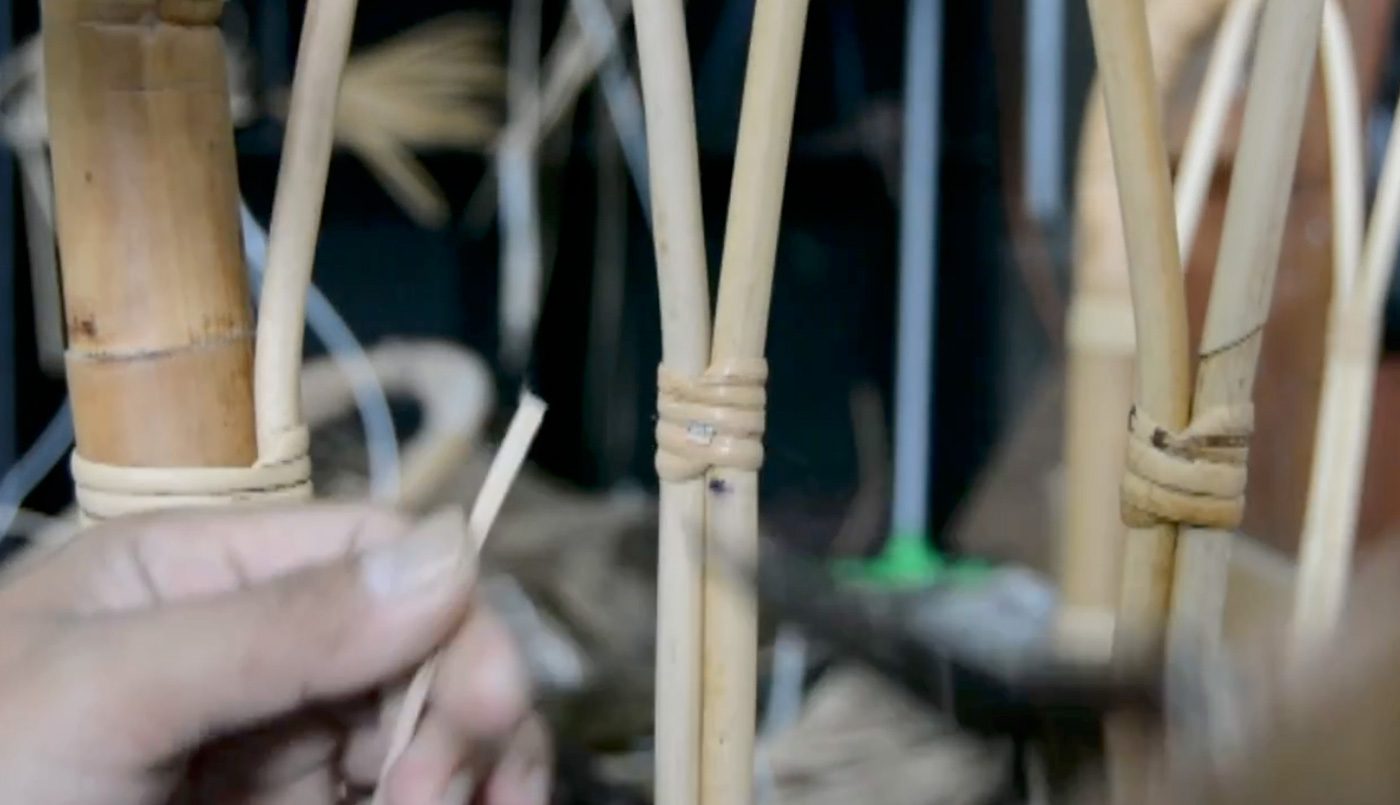
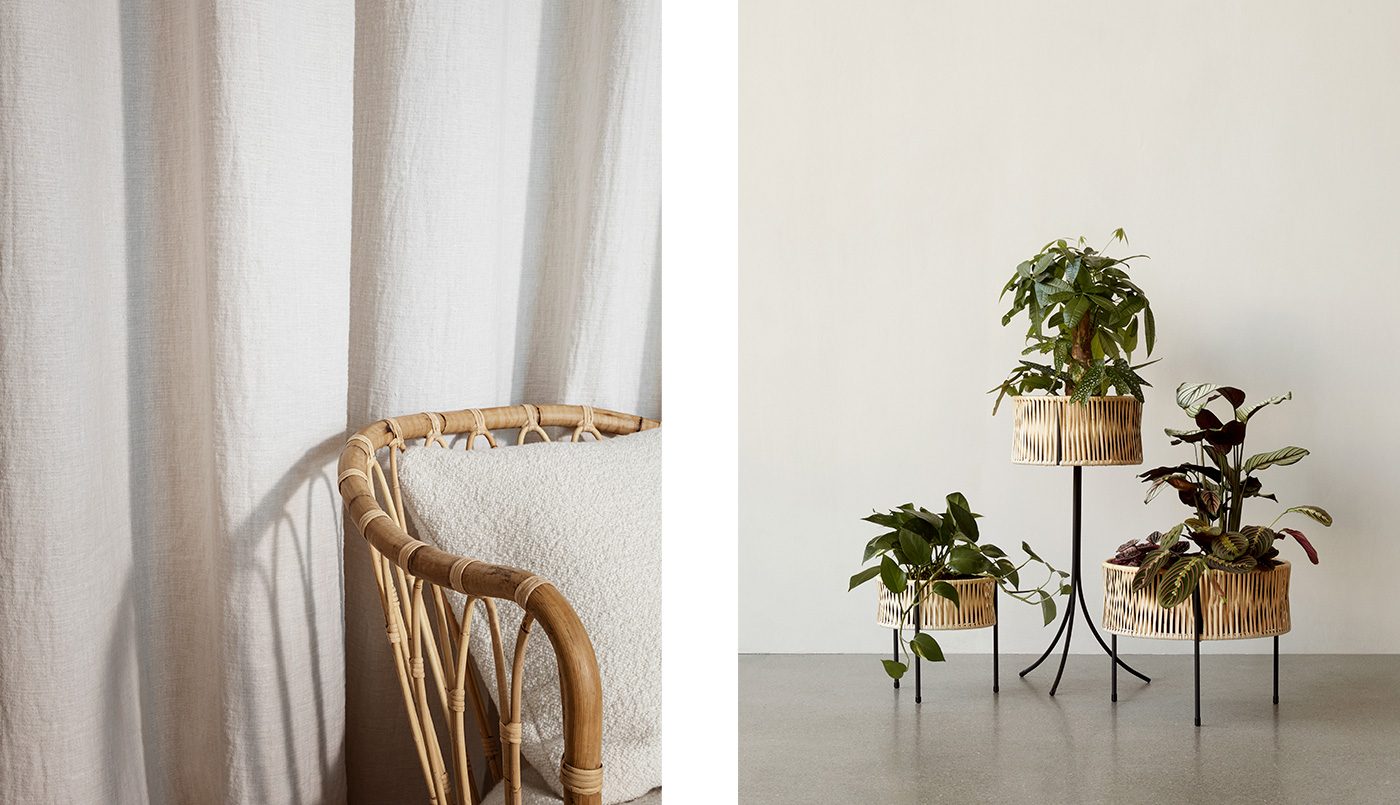
History of Rattan
Believed to be the oldest natural fibre known to man, rattan was first used by artisans in Asia. The material caught the attention of Europeans during the colonial era of the 18th and 19th centuries. During the height of the British Empire in the 19th century, rattan furniture became extremely popular in Britain and across Europe. Italian architect Renzo Mongiardino brought rattan indoors in the hope of introducing a more relaxed, informal atmosphere. As using rattan indoors was better suited to the cooler British climate, this trend soon caught on.
Many of the great designers of the 20th century were drawn to rattan’s versatility. Masters including Gio Ponti, Gabriella Crespi, and Jacques Adnet returned to the material again and again, as did many mid-century Danish masters such as Arne Jacobson, Viggo Boesen, and Tove and Edvard Kindt-Larsen. These pioneers used rattan to create iconic pieces of modernist furniture, demonstrating new possibilities for the material.
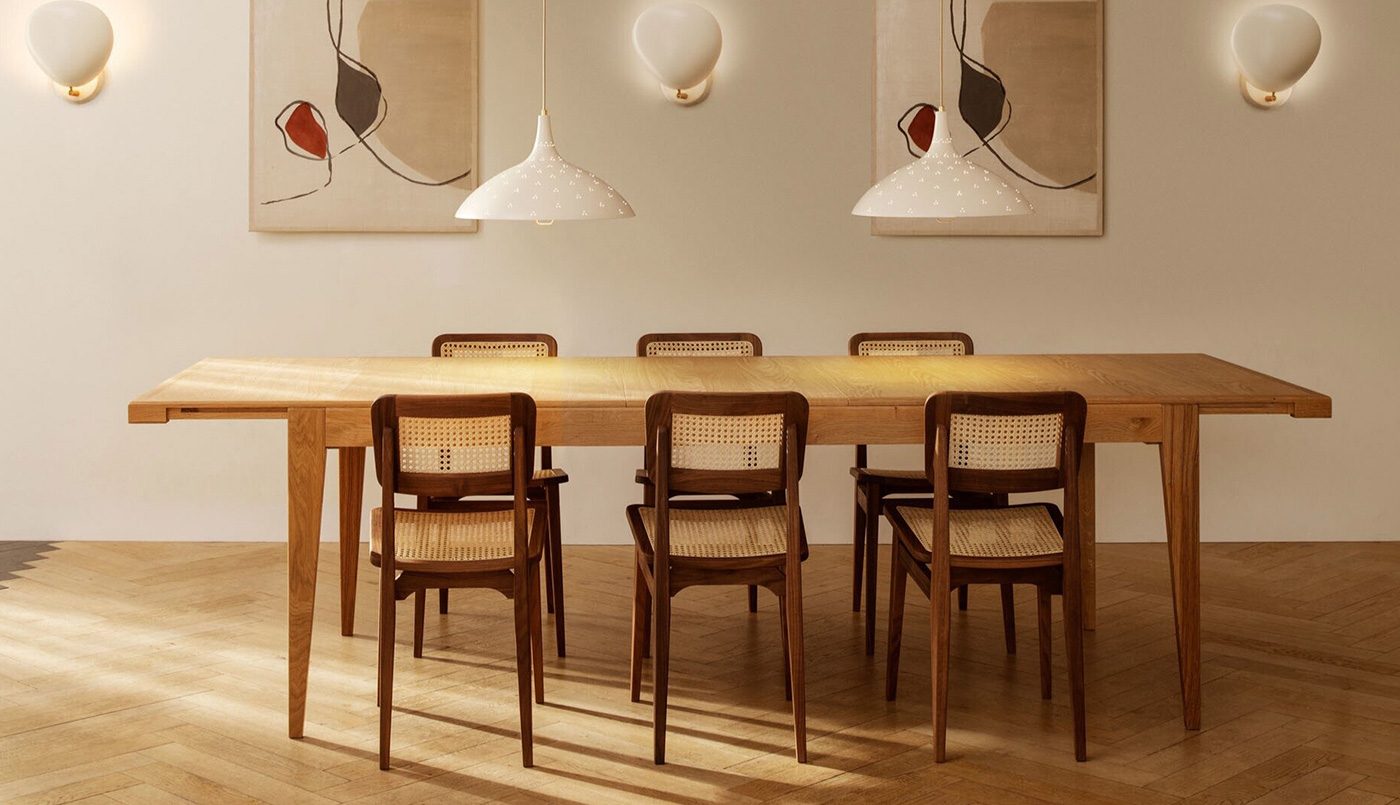
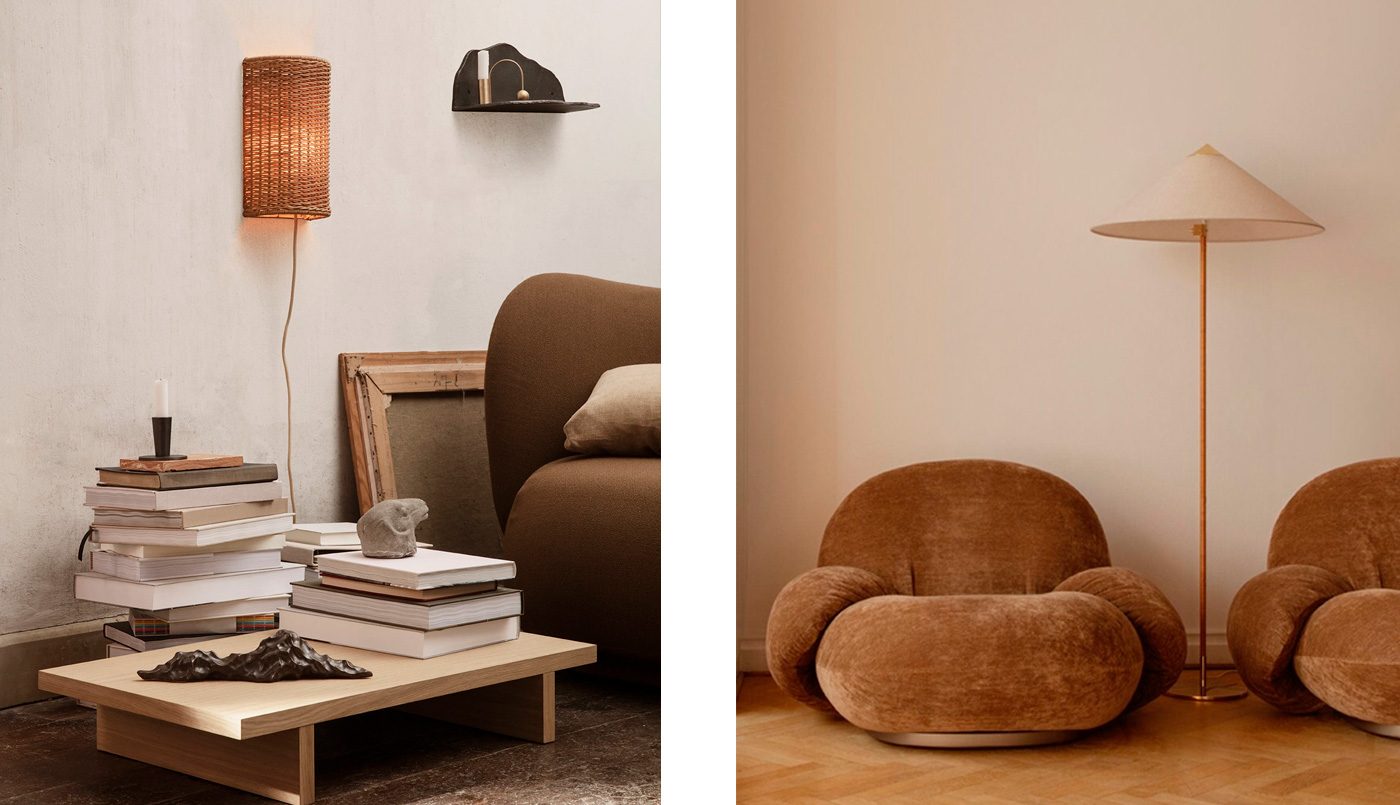
The Difference Between Rattan, Cane and Wicker
The term ‘rattan’ is often used interchangeably with ‘wicker’, though this is slightly misleading. Rattan actually refers to the plant and the material whereas wicker describes a specific style of weaving. Many materials can be used to make wicker furniture, rattan is just one of them. Others include cane, straw, reed, willow or manmade fibres. Both rattan and cane derive from the rattan plant, cane is the thinner material that results from stripping the rattan plant.
Rattan's Sustainability Credentials
Rattan stems regenerate every five to seven years, making rattan one of the world’s fastest-growing natural material. As long as the canes are not cut before they reach maturity, rattan can be a highly sustainable choice. Because they grow by hugging trees, their cultivation has been indirectly linked to the preservation of rainforests. As both the inner and outer parts of the plant can be used, rattan and cane production creates little waste.
When looking for 'sustainable' furniture, the longevity and durability of materials are important factors to consider. The longer items can be kept in use, the less natural resources are strained. Requiring very little maintenance, rattan will last for years to come; a carefully constructed rattan chair can last for over a century. Over time, genuine rattan will acquire an attractive patina as it ages, resulting in timeless furniture that lasts for generations. Once a piece of rattan furniture does inevitably come to the end of its life, this material is biodegradable.
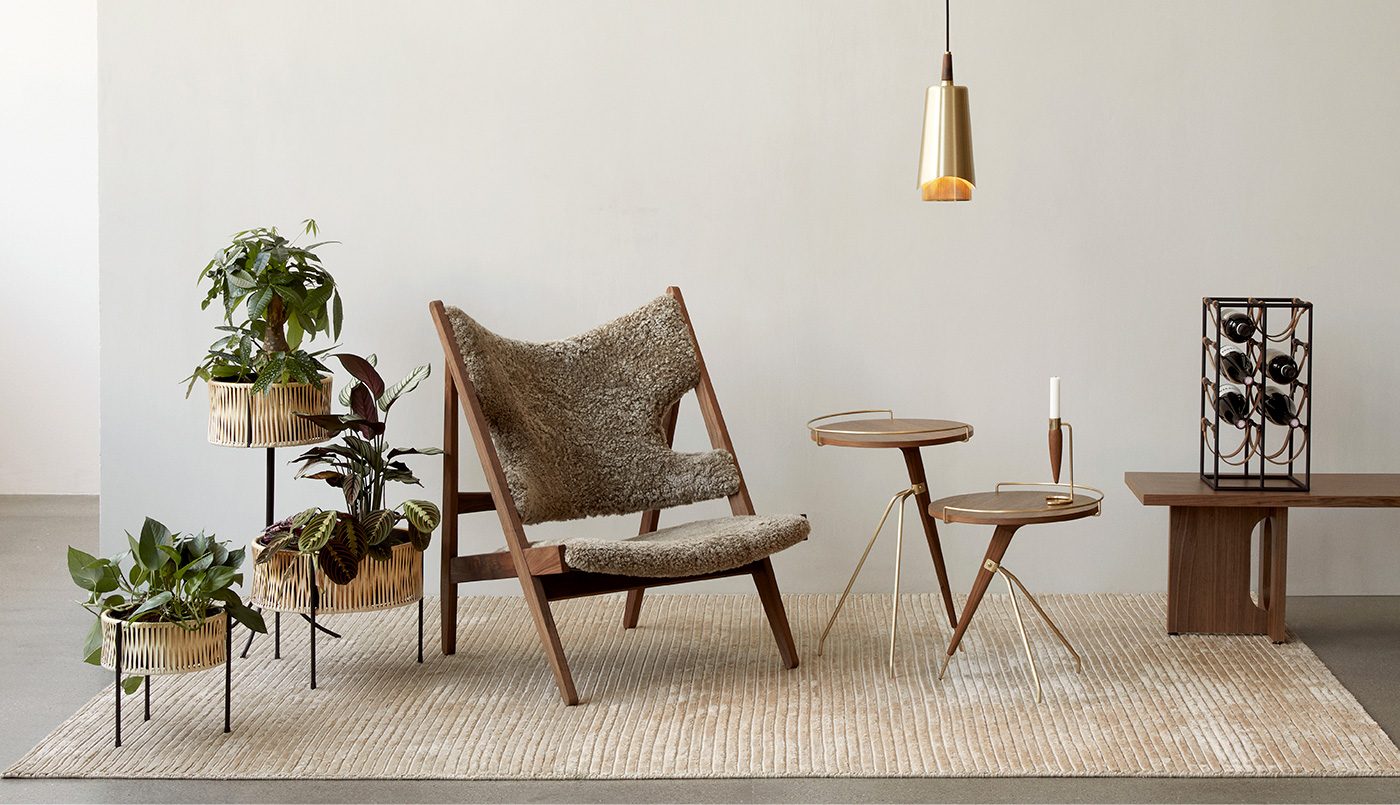
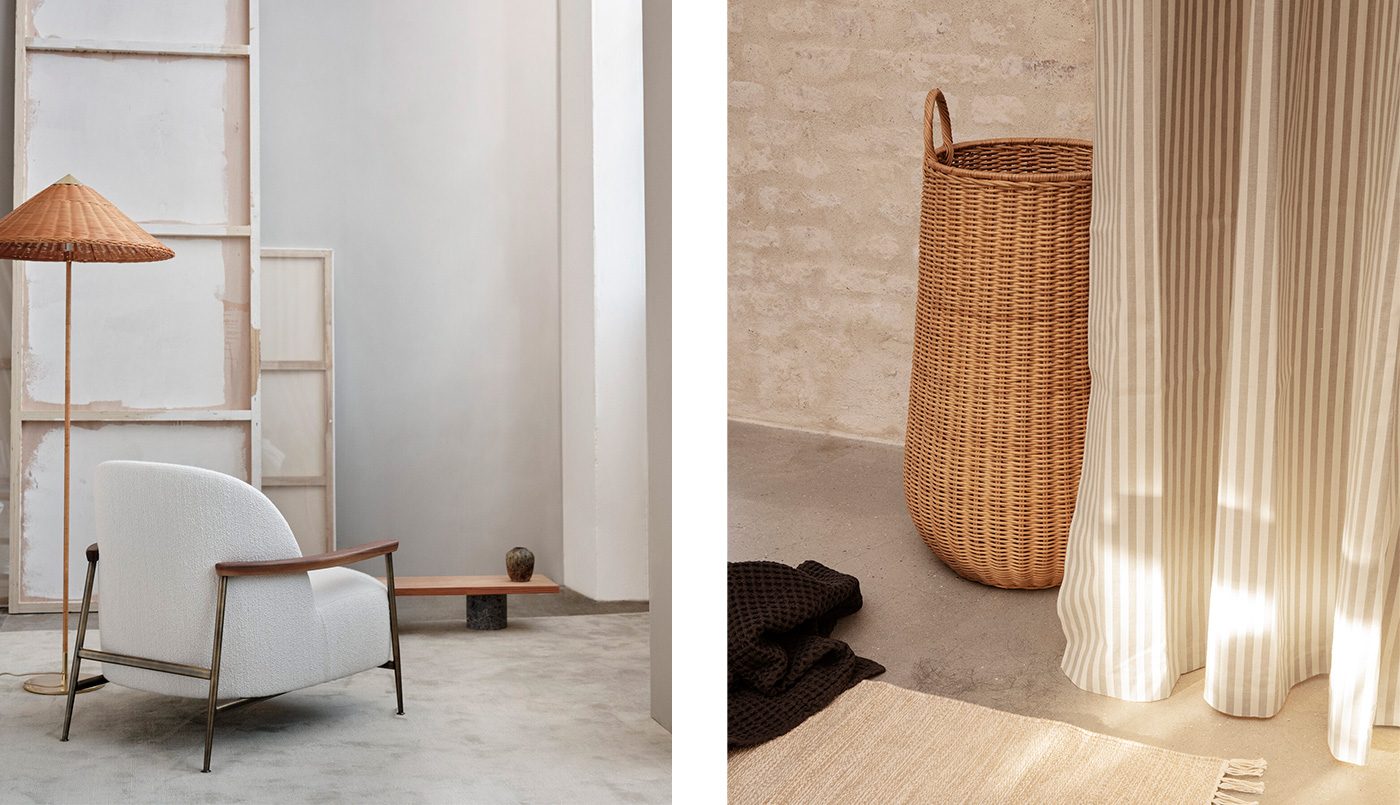
Introducing Rattan & Cane Into Your Home
Besides being an eco-friendly material, rattan is a wonderful way to bring a soft, organic element to your interiors. Create a welcoming, airy feeling to a room with this naturally inviting material. There many ways to incorporate rattan elements into the home. Firstly, try introducing the material in a small way with careful details and accessories. Alternatively, go all out with a bolder combination of furniture, lighting and home accessories. The beauty of rattan is it looks great coupled with other rattan, cane and wicker pieces, as well as contrasting textures. Use rattan touches alongside natural materials, such as a jute rug, a leather chair or a clay vase to create layers of texture.

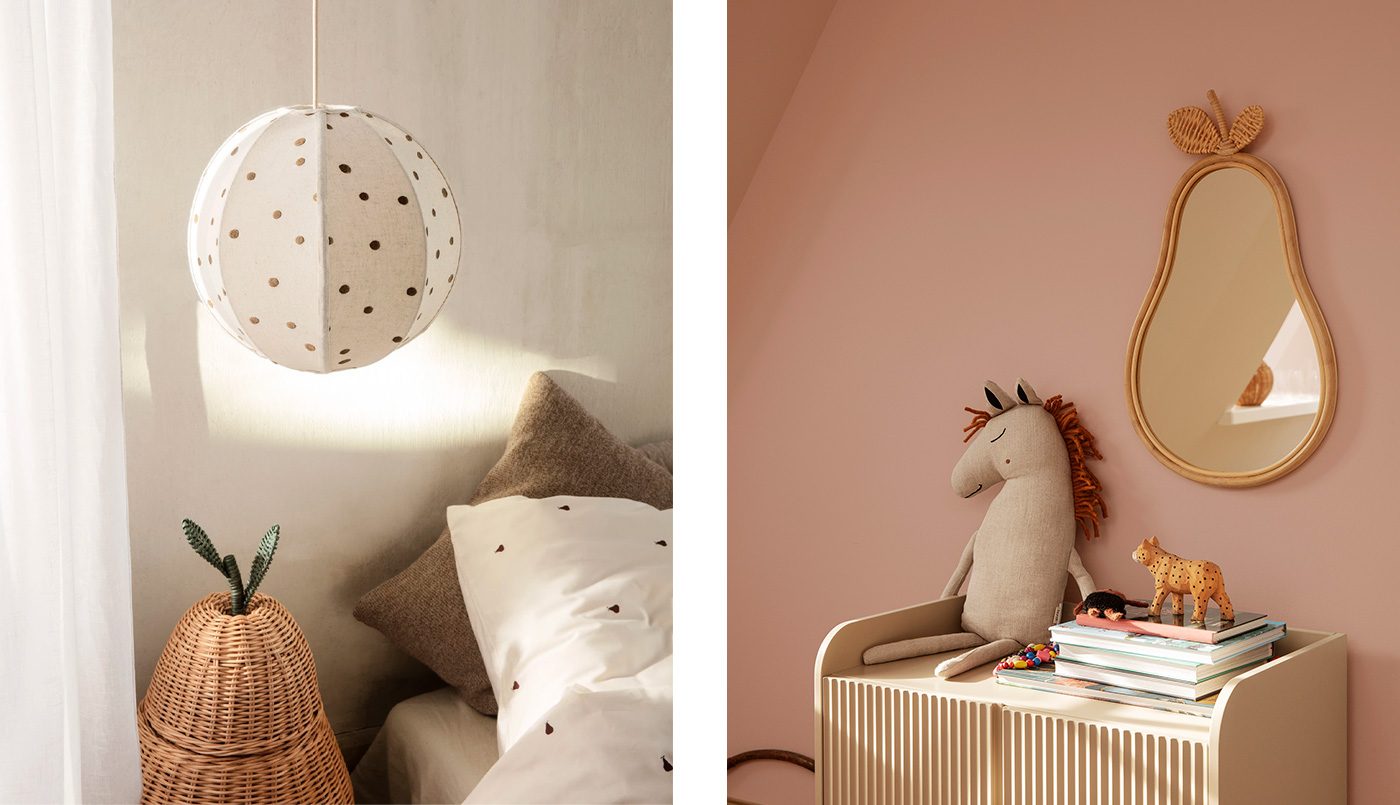
Our Favourite Rattan & Cane Pieces for 2021
2021 is an exciting year for rattan and cane furniture and accessories. With new products introduced from Ferm Living and Gubi alongside firm favourites from Menu and Warm Nordic. This year, the Grace Lounge Chair, originally designed in 1936 by Tove Kindt-Larsen, has been brought to life by Gubi. The beautiful Grace Lounge Chair is informal and yet elegant in a way only a rattan chair can be. Read more on the story of this recently uncovered design.
Ferm Living's SS21 family is a stunning collection of furniture and accessories with a strong focus on natural textures and organic shapes. Rattan features heavily in this beautiful collection, our favourites include the Dou Lampshades and the Braided Basket, not to mention the adorable Apple and Pear Rattan Mirrors from their Kids Range.
Below (left to right): Ferm Living Dou Floor Lamp, Ferm Living Pear Mirror, Gubi Grace Lounge Chair, Broste Rattan Hanging Chair, Ferm Living Braided Basket. See our full selection of rattan and cane furniture, lighting and home accessories.
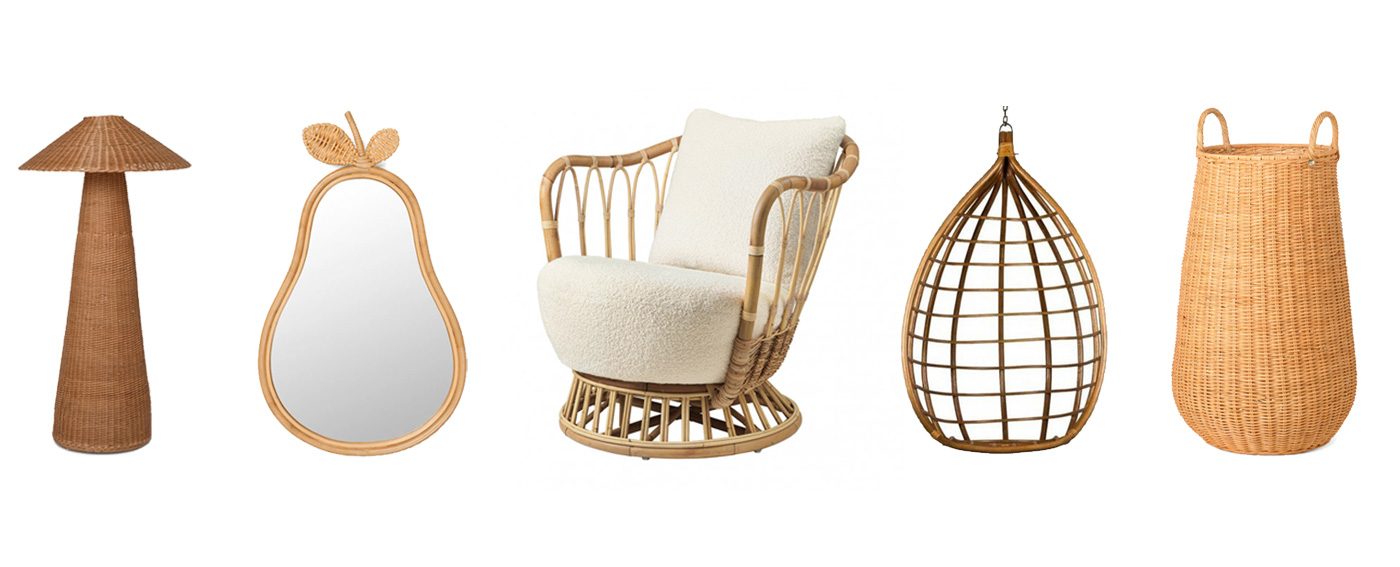
Looking After Your Rattan
Rattan is very low maintenance, requiring nothing more than dusting with a cloth or a gentle vacuum with a brush attachment. Though rattan can be stained or varnished for aesthetic purposes, this is not necessary for its preservation. Rattan is remarkably hardwearing and naturally resistant to heat, cold, moisture, insects and temperature fluctuations. Whether you opt for rattan furniture or introduce smaller details with rattan home accessories, with a little love and care your rattan pieces will last for generations.
Time for more? Storage Solutions For Your Outdoor Space | 10 Best Portable Lamps For The Modern Home | The Lighting Designs of Achille Castiglioni
-
All StoriesHumanrace x USM at Milan Design Week 2025Read More
Pharell's Humanrace teams up with USM Modular Furniture for Salone del Mobile Milano 2025. An immersive installation that reimagined the bathroom as a holistic dimension for well-being, where the day’s routines become rituals. Swiss design icon, the USM Haller modular...
